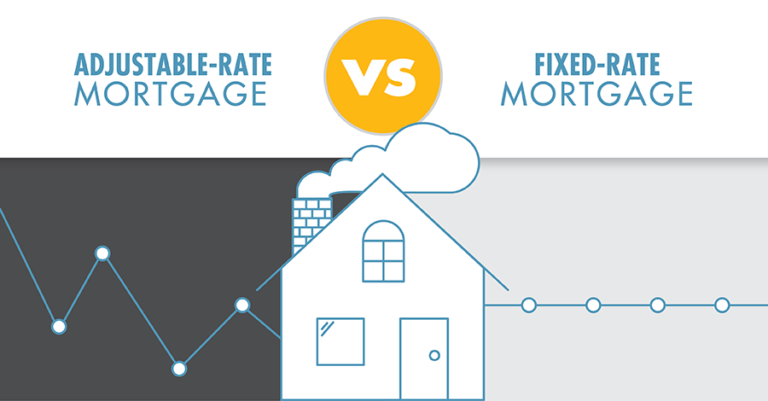Best Practices for Using a Mortgage Payment Calculator When Budgeting Your Finances
When it comes to managing your finances, especially when planning to buy a home, understanding how much you can afford is crucial. A mortgage payment calculator is one of the most effective tools available to help you estimate your monthly payments and determine what fits within your budget. This tool simplifies complex calculations and provides clarity on how different factors like interest rates, loan terms, and down payments affect your overall costs.
In this article, we will explore best practices for using a mortgage payment calculator effectively. Whether you’re a first-time homebuyer or someone looking to refinance an existing mortgage, these tips will guide you in making informed financial decisions.
What Is a Mortgage Payment Calculator?
A mortgage payment calculator is an online tool designed to help you estimate the monthly payments required for a home loan. It takes into account various factors such as:
- The price of the home
- Down payment amount
- Loan term (e.g., 15 years or 30 years)
- Interest rate
- Property taxes
- Homeowners insurance
- Private mortgage insurance (PMI), if applicable
By inputting these details, the calculator provides an estimated monthly payment that includes both principal and interest, along with other associated costs like taxes and insurance.
Why Use a Mortgage Payment Calculator?
Using a mortgage payment calculator offers several benefits:
- Clarity on Affordability: It helps you understand how much house you can afford based on your income and expenses.
- Budget Planning: You can plan your finances better by knowing your expected monthly housing costs.
- Comparison Tool: It allows you to compare different loan options, interest rates, and terms.
- Avoid Overborrowing: By calculating realistic payments, you reduce the risk of taking on more debt than you can handle.
- Quick Adjustments: You can instantly see how changes in variables like down payment or interest rate impact your payments.

Best Practices for Using a Mortgage Payment Calculator
1. Gather Accurate Financial Information
Before using a mortgage payment calculator, ensure that you have accurate financial details at hand. This includes:
- Your gross monthly income
- Current debts (e.g., car loans, student loans)
- Estimated property taxes in the area where you’re buying
- Homeowners insurance premiums
Having precise numbers ensures that the results from the calculator are reliable.
2. Understand Key Inputs
To get the most out of the calculator, it’s essential to understand what each input represents:
- Home Price: The total cost of the property you’re considering.
- Down Payment: The upfront amount you’ll pay toward the home’s purchase price.
- A higher down payment reduces your loan amount and monthly payments.
- If less than 20%, PMI may be required.
- Loan Term: The length of time over which you’ll repay the loan (e.g., 15 years vs. 30 years).
- Shorter terms mean higher monthly payments but lower total interest paid.
- Longer terms have lower monthly payments but higher overall interest costs.
- Interest Rate: The annual percentage rate charged by lenders for borrowing money.
- Rates vary based on credit score, market conditions, and loan type.
3. Experiment with Different Scenarios
One of the best features of a mortgage payment calculator is its flexibility. Use it to test various scenarios:
Example Scenarios:
- Increase or decrease your down payment to see how it affects monthly payments.
- Compare fixed-rate vs adjustable-rate mortgages (ARMs).
- Test different loan terms (e.g., 15-year vs 30-year) to find what works best for your budget.
This experimentation helps identify options that align with both short-term affordability and long-term financial goals.
4. Factor in Additional Costs
Many people overlook additional costs associated with homeownership when using a mortgage calculator:
Common Additional Costs:
- Property Taxes: These vary by location and are typically included in escrow accounts managed by lenders.
- Homeowners Insurance: Protects against damages or losses; required by most lenders.
- HOA Fees: If applicable, these fees cover community maintenance and amenities.
Ensure that these costs are included in your calculations for an accurate picture of total housing expenses.
5. Use Realistic Interest Rates
Interest rates play a significant role in determining monthly payments:
Tips for Inputting Interest Rates:
- Check current average rates from reliable sources like Bankrate or NerdWallet.
- If unsure about your credit score’s impact on rates, use slightly higher estimates as a precautionary measure.
Even small changes in interest rates can significantly affect affordability over time.
6. Consider Your Debt-to-Income Ratio (DTI)
Lenders often use DTI ratios to assess whether borrowers can handle additional debt:
How DTI Works:
- Calculate all monthly debt obligations (e.g., car loans + credit card minimums + projected mortgage).
- Divide this total by gross monthly income; multiply by 100 for percentage.
Aim for housing expenses not exceeding 28% of gross income and total debts below 36%.
7. Plan for Future Changes
Life circumstances can change unexpectedly—job loss, medical emergencies, or family growth might alter financial stability:
Planning Ahead:
- Choose conservative estimates when entering data into calculators.
- Build an emergency fund covering at least three months’ worth of expenses before committing to large mortgages.
Common Mistakes When Using Mortgage Calculators
Avoid these pitfalls while using calculators:
- Ignoring Property Taxes & Insurance:
- Many calculators allow customization; failing to include taxes/insurance leads to underestimating actual costs.
- Overestimating Income:
- Use net income instead of gross if budgeting conservatively; this reflects take-home pay after deductions like taxes/retirement contributions.
- Forgetting Maintenance Costs:
- Allocate funds annually (~1%-3% property value) toward repairs/upkeep beyond regular bills/mortgage dues!
4 . Assuming Fixed Expenses Forever : – Remember utilities fluctuate seasonally ; inflation impacts tax assessments .
Tips for First-Time Homebuyers
If you’re new to homebuying, here are some additional tips when using a mortgage calculator:
- Start Conservatively: Begin with lower home prices and higher interest rates as worst-case scenarios.
- Include Emergency Savings: Ensure you have enough savings left after accounting for down payment and closing costs.
- Consult Professionals: While calculators are helpful tools, consulting with financial advisors or mortgage brokers provides personalized insights tailored to your situation.
Advanced Features in Mortgage Calculators
Some modern mortgage calculators go beyond basic estimates by offering advanced features:
- Extra Payment Options:
- Calculate how making additional principal payments impacts loan payoff timelines and total interest paid.
- Tax Deduction Estimations:
- Estimate potential tax benefits from deducting mortgage interest (if applicable under current tax laws).
- Refinance Comparisons:
- Compare current loan terms with potential refinancing options to determine savings opportunities.
- Affordability Analysis:
- Input income levels and debt obligations directly into certain calculators for detailed affordability assessments.
Using these advanced features provides deeper insights into long-term financial implications.
How Often Should You Use a Mortgage Calculator?
There’s no fixed rule about how often you should use a mortgage calculator—it depends on where you are in the homebuying process:
- Early Stages: Use it frequently when exploring different price ranges or loan options.
- Preapproval Stage: Double-check numbers provided by lenders against calculator estimates.
- Post-Purchase Planning: Revisit periodically if considering refinancing or making extra payments toward principal.
Regular use ensures that your financial plans remain aligned with changing circumstances or market conditions.
Final Thoughts
A mortgage payment calculator is an invaluable tool when budgeting for homeownership—but only if used correctly! By following best practices like gathering accurate data, experimenting with scenarios, factoring in additional costs, and avoiding common mistakes, you’ll gain clarity on what fits within your budget while avoiding surprises later on.
Remember:
- Always cross-check results across multiple platforms.
- Factor in all associated costs—not just principal/interest!
- Plan conservatively; life happens unexpectedly sometimes!
With proper planning aided by reliable tools like these , anyone navigate complex world mortgages confidently .






